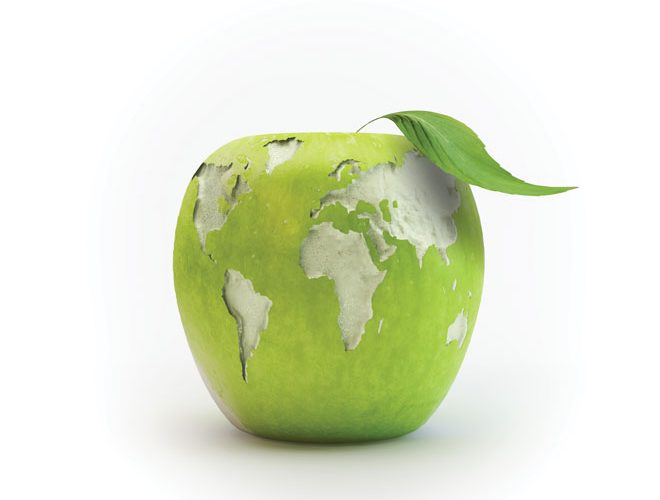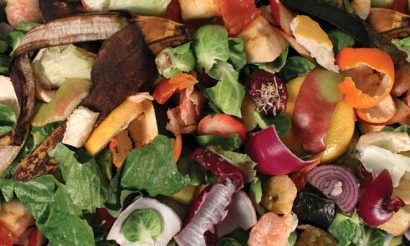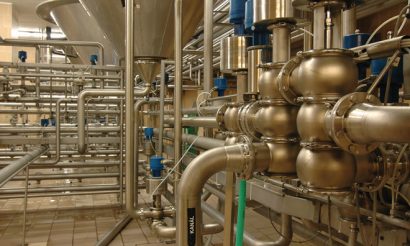Upgrading sustainability with Industrial Biotechnology
- Like
- Digg
- Del
- Tumblr
- VKontakte
- Buffer
- Love This
- Odnoklassniki
- Meneame
- Blogger
- Amazon
- Yahoo Mail
- Gmail
- AOL
- Newsvine
- HackerNews
- Evernote
- MySpace
- Mail.ru
- Viadeo
- Line
- Comments
- Yummly
- SMS
- Viber
- Telegram
- Subscribe
- Skype
- Facebook Messenger
- Kakao
- LiveJournal
- Yammer
- Edgar
- Fintel
- Mix
- Instapaper
- Copy Link
Posted: 14 October 2016 | Ana Galindo García | No comments yet
Ana Galindo García from the Leitat Technological Centre, Barcelona describes how biotechnology might be used to improve sustainability.


A growing number of analyses state that long-term sustainability is not achievable with the current cadence of the food industry. There is evidence enough to declare that many food production systems of today compromise the capacity to produce food in the future. For maintaining the current production rates, or even increasing them, in concordance with population, the food industry must conquer a number of key challenges that could also lead to opportunities for a production paradigm to be changed.
Sustainability has been extensively defined as consumption that can continue indefinitely without degradation of natural, physical, human and intellectual capital. It is not a megatrend to be implemented in order to satisfy the market’s demand, but a call for awareness of needing structural changes in industry. Concerning food, the general definition can be applied to multiple aspects of processes and products, since the objective is caring about environment, improving quality of life and assuring the prosperity of future generations. The emphasis is no longer on removing contaminants from an already damaged environment, but on the need to reshape industrial process technologies to prevent pollution at the source. The European policy is reflected in the Europe 2020 Strategy, as “find(ing) new ways to reduce inputs, minimise waste, improve management of resource stocks, change consumption patterns, optimise production processes, management and business methods, and improve logistics”. The concept is also addressed in ‘The Roadmap to a Resource Efficient Europe’ (COM(2011) 571) which outlines how Europe’s economy can be transformed into a sustainable one by 2050, highlighting the food sector as priority area for taking action.1
From biowaste to value through Industrial Biotechnology
Industrial Biotechnology, also referred to as ‘white biotechnology’, is strongly developing and differs from other types of biotechnology aimed at medical or agricultural sectors. The technology employed is based on a set of tools, engineering principles and biological systems used to improve industrial processes. In addition, biotechnology has been widely used in producing fermented foods for many years despite not being termed as Industrial Biotechnology.
A wide range of products can be produced within the categories of chemicals, materials or energy such as fine chemicals, pharmaceuticals, vitamins, biofuels, bioplastics, colourants, enzymes, food additives, pesticides, etc. Industrial Biotechnology is commonly being called the ‘Third biotechnology wave’, in which biowaste comes into value. The technology expands from the previous step of manufacture; the experimental tasks in laboratory; to the end of life of products. It provides a recirculating flow of feedstock that would otherwise be discarded. During the manufacturing process, waste and by-products are produced, including liquid, solid and gas streams, and may be revalorised industrially to biomass. Therefore, biomass can be employed as feedstock for other industrial production processes. In food industry, the general idea of Figure 1 is also applied. In this way, a zero waste philosophy of manure and implementing a circular strategy management of food waste is the final objective of implementing new sustainable resources in the food sector. As stated before, the focus is on waste prevention during the manufacturing process rather than an end pipe waste management – this is the approach to a novel paradigm in industry.
Target areas and methods for enhancing sustainability in food industry
The two main areas concerning food industry sustainability are stimulation of sustainable food production and reduction of food waste and losses. These issues can be addressed by Industrial Biotechnology whilst pollution is prevented, costs are lowered, the environment is protected and new markets emerge. The technology may be applied to existing processes, or to novel ones, to promote a sustainable process from its establishment.
Stimulation of sustainable production process
The stimulation of sustainable production process is to substitute, partially or completely, the chemical process with a biotechnological one. The usage of biowaste from non-petrochemical sources such as feedstock, monitoring and solvents substitution are also included in this field.
To better visualise the substitution of chemical processes, it can be exemplified by the case of the production of aspartame. Currently, aspartame, an artificial sweetener used in reduced-calorie food, is mostly produced biotechnologically. Aspartame is approximately 200 times sweeter than sugar and is one of the most extended sweeteners in the market. It is derived from amino acids, specifically aspartic acid and phenylalanine. These amino acids were previously produced by chemical processes, however since it was economically feasible to produce them by biocatalysis, this manufacturing path was substituted. The operational conditions of peptide synthesis are controlled for assuring no profitable by-products and promoting easy downstream processing (recovery and purification of biosynthetic products). Therefore, it often results in a higher conversion rate and a faster reaction, compelling arguments to transmute the traditional chemical process.


Another interesting illustration is the production of enzymes by means of industrial biotechnology. Food enzymes are produced by GRAS microorganisms, meaning ‘Generally regarded as safe’. Enzymes added to food preparations are able to improve their flavour, texture, smell, digestibility and nutritional value. Due to their potential process effectiveness enzymes have progressively become a versatile tool for manufacturing in different branches of food technology. Applications of enzymes are still being expanded and new enzymes are emerging to substitute traditional chemical based technologies.
In support of stimulating sustainable processes, industry must provide alternative harmless solvents to the environment. In such processes solvents are key raw materials for developing the manufacture and industrial quantities required. Meaningful processes use the most widespread sustainable solvent produced biotechnologically, ethanol, 26,000,000 tons2 of which, occurs annually. Bio-ethanol is non-toxic, water soluble and quickly biodegradable. It is currently produced by fermentation and there is growing interest to find new economical carbohydrate sources for microorganism growth and fermentation. It is a complete substitution of the chemical process in which there is still a gap to overcome and convert in an even more sustainable process using renewable biomass feedstock.
Reduction of food waste
The reduction of food waste can be addressed through by-products revalorisation of the main production process. The decrease of chemical waste generation and fuel energy requirements is a bonus, since its reduction also has an impact on potentiating the process sustainability. Food wastes with the highest recovery potential include vegetables, fruits, dairy products, meat derivatives and fisheries. A stream that can also become valuable is the water employed in the process, which can be used as a source for producing novel products.
For instance, bioplastic production has received increasing interest in industry. Briefly; bioplastics, such as polyhydroxybutyrate (PHB), have been developed from such biowaste as pea-shells using Bacillus strains3 , but still its production is too expensive to be cost-effective. Hence other types of bioplastics are targeted through manufacture such as polyhydroxyalkanoates (PHA) and poli-lactic acid. Starch-based plastics are another important class of bioplastics used to make biodegradable products4 . When implementing products in other markets is not desired, it is equally possible to revalue by-products biotechnologically. Multiple examples can be found, such as products from wine processing that can be used as a natural source of antioxidants5 ; nutraceuticals obtained from milk whey; or fibres extracted from fruits used as prebiotics.
Conclusion and future prospects


Industrial biotechnology is able to synthesise a vast range of profitable products for the food industry. Food waste from diverse sources can be revalorised using biotech processes such as biocatalysis and fermentation, in order to be reduced during manufacture, but also reduce packaging and product delivery. Current and emerging applications of biotechnology can be applied throughout the entire manufacturing process within the food industry, particularly in the production and processing of chemicals and reducing food waste.
However, the food industry in general needs to study their streams in the production process in order to assess which ones are suitable to be revalorised. Not only can a more sustainable process can be achieved by means of industrial biotechnology, but production costs and energy requirements can be lowered within the process. Indeed, the conjugation of science with industrial processes is a required alternative for preventing waste and achieving a more sustainable industry.
About the author
Ana Galindo García is currently working in the Research and Development division of the Leitat Technological Centre, Barcelona, Spain. Specifically in the Industrial Biotechnology department, within Environmental and BIO Technologies group, as a Bioprocess Engineer. She has three years of experience in providing technical and scientific support in multiple projects, for the development of new products and technologies. She has further developed an interest in food processing and environment with a biotechnological focus. She graduated in Biotechnology from Universidad Pablo Olavide, (Seville, Spain), and holds an MsC in Industrial Biotechnology from Universidad Autónoma de Barcelona, (Barcelona, Spain).
References
- European Commission. (2011). Communication from the Commission to the European Parliament, the Council, the European Economic and Social Committee and the Committee of the Regions on the Response to the Report of the Expert Group on the Interim Evaluation of the Seventh Framework Programme for Research, Technological Development and Demonstration Activities and to the Report of the Expert Group on the Interim Evaluation of the Risk-Sharing Finance Facility. Publications Office of the European Union
- Gavrilescu, M., & Chisti, Y. (2005). Biotechnology—a sustainable alternative for chemical industry. Biotechnology advances, 23(7), 471-499
- Kumar, T., Singh, M., Purohit, H. J., & Kalia, V. C. (2009). Potential of Bacillus sp. to produce polyhydroxybutyrate from biowaste. Journal of applied microbiology, 106(6), 2017-2023
- Razza, F., & Innocenti, F. D. (2012). Bioplastics from renewable resources: the benefits of biodegradability. Asia-Pacific Journal of Chemical Engineering, 7(S3), S301-S309
- Brenes, A., Viveros, A., Chamorro, S., & Arija, I. (2016). Use of polyphenol-rich grape by-products in monogastric nutrition. A review. Animal Feed Science and Technology, 211, 1-17.
Issue
Related topics
Food Waste, Lab techniques, Sustainability, Technology & Innovation









